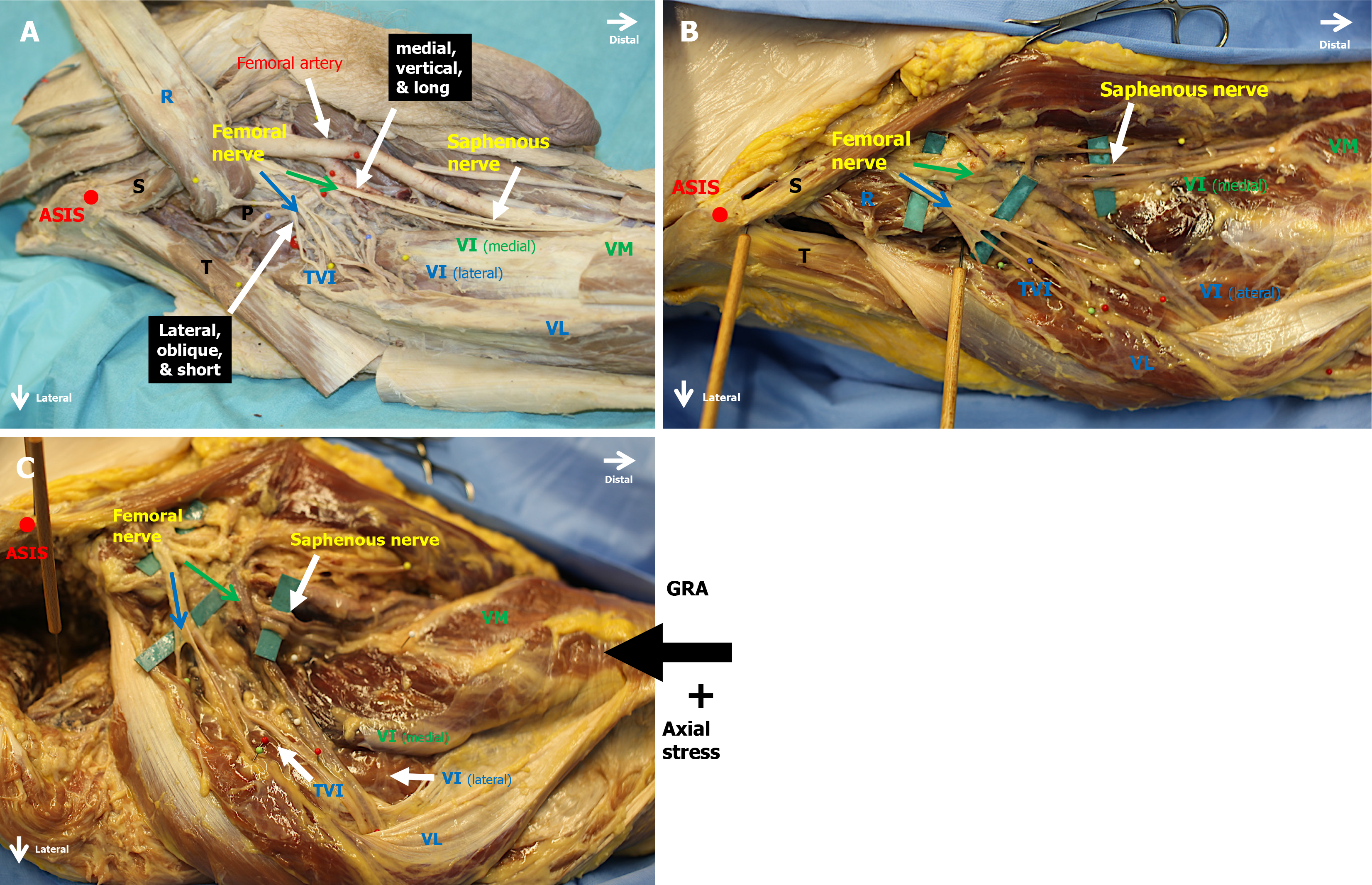Copyright
©The Author(s) 2024.
World J Orthop. Dec 18, 2024; 15(12): 1175-1182
Published online Dec 18, 2024. doi: 10.5312/wjo.v15.i12.1175
Published online Dec 18, 2024. doi: 10.5312/wjo.v15.i12.1175
Figure 2 View of the right femoral thigh.
A: Antero-lateral view of the right femoral thigh. The anatomy of the femoral nerve with the medial vertically running division (green arrow) and the lateral short oblique division (blue arrow) running over the major psoas muscle, which is an obstacle for these nerve branches. The rectus femoris muscle (R) was retracted proximally and medially for better vision; B: Antero-lateral view of the right femoral thigh demonstrating the medial (green arrow) and lateral (blue arrow) femoral nerve divisions and its entry points into the muscle before Girdlestone resection arthroplasty. The nerve branches were highlighted with pieces of green paper; C: Antero-lateral view of the right thigh with the medial (green arrow) and lateral (blue arrow) division of the femoral nerve after Girdlestone resection arthroplasty. The femoral nerve was highlighted with green paper. We performed a Girdlestone resection arthroplasty through a direct anterior approach to the hip joint and applied axial stress to the calcaneus (thick black arrow). We measured the distance from the anterior superior iliac spine (red point) to the nerve entry points into the muscle. ASIS: Anterior superior iliac spine; GRA: Girdlestone resection arthroplasty; TVI: Tensor vastus intermedius; VI (lateral): Vastus intermedius lateral part; VI (medial): Medial area of the vastus intermedius; VM: Vastus medialis.
- Citation: Spuehler D, Kuster L, Ullrich O, Grob K. Femoral nerve palsy following Girdlestone resection arthroplasty: An observational cadaveric study. World J Orthop 2024; 15(12): 1175-1182
- URL: https://www.wjgnet.com/2218-5836/full/v15/i12/1175.htm
- DOI: https://dx.doi.org/10.5312/wjo.v15.i12.1175









